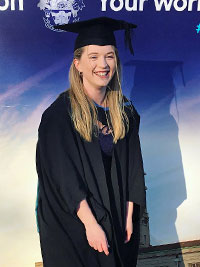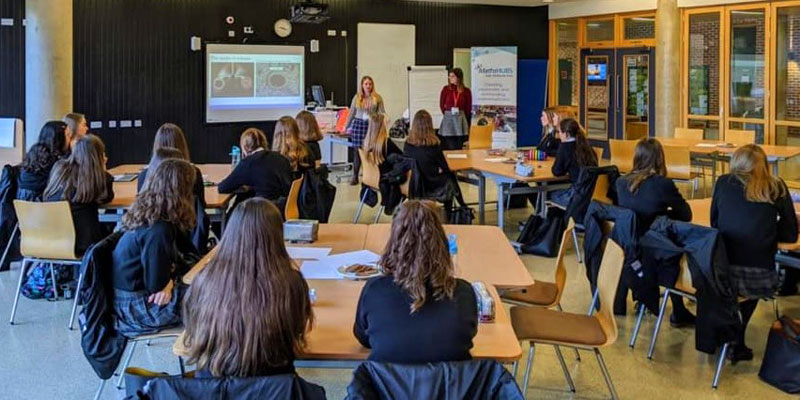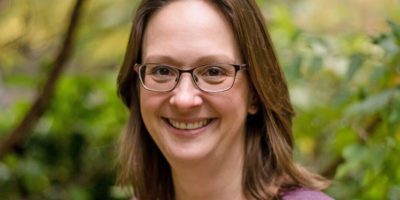Sarah Brown is a PhD student of mathematical medicine at the University of Nottingham alongside working part time as communications manager for the MRC Toxicology Unit at the University of Cambridge. Before this, Sarah completed a bachelor’s degree in mathematics and biology at the University of Leeds, and a master’s degree in mathematical medicine and biology at the University of Nottingham. She has also created What’s the Point of Maths, a programme that shows how maths can be applied in real life.

“The usual reaction that I receive when I tell people what I do in my PhD is surprise. I think this is their reaction, firstly because I am a young woman doing advanced mathematics, and secondly because they have no idea that maths can be used to help us learn about diseases like asthma.”
Combining advanced mathematics and biology
I first did a joint honours degree in maths and biology at the University of Leeds. During my final year, in particular, I was able to combine these two subjects (that had previously seemed so different) and I found this combination really interesting and exciting. I, therefore, decided to go on to do a master’s degree in mathematical medicine and biology at the University of Nottingham.
Early on in my master’s year, I was offered a place on a Medical Research Council-funded PhD working jointly between the School of Mathematical Sciences and the Division of Respiratory Medicine, also at the University of Nottingham. While working on this research project I developed a passion for communicating my work, and science in general, to a range of audiences. I volunteered at many events as a STEM ambassador and developed my own social media and school workshop-based outreach initiative.
During the third year of my PhD, I also worked for the School of Mathematical Sciences as their social media officer followed by a role working on the Research Excellence Framework (REF). I am now nearing the end of my PhD and have recently changed to working part-time on this and part-time as the new communications manager for the MRC Toxicology Unit at the University of Cambridge.
Understanding asthma
My PhD uses maths to learn about what happens inside the airways of someone that has asthma. For some asthma patients, the usual treatments do not work and so this disease can become extremely serious and life-threatening.
Understanding more about the causes of asthma, and what makes certain people have a more severe form than others, is therefore incredibly important. Mathematical modelling presents a risk-free, fast, and cheap method of determining the mechanisms involved and also reduces the use of animals in research.
During the first year of my PhD, I worked in the lab collecting data on the cells that surround the human airway. I then used this data to help in the development and validation of computational mathematical models that aim to mimic the behaviour of these cells.
Day to day this involves deciding on the modelling choices that best represent the biology, writing lots of code and running simulations using MATLAB, and analysing the data produced to see what it tells us about asthmatic airways.
The usual reaction that I receive when I tell people what I do in my PhD is surprise. I think this is their reaction, firstly because I am a young woman doing advanced mathematics, and secondly because they have no idea that maths can be used to help us learn about diseases like asthma.
The point of maths

After taking this idea to several science fairs, I decided to create school-based sessions to inspire young people about the wide range of mathematical applications out there! In these sessions, younger audiences have hands-on activities to try, and older audiences also have the opportunity to learn about career routes in applied mathematics and university life.
Maths is for everyone!
If you are a girl or woman wanting to learn about maths-related careers, have an explore of the many great resources available online, such as Maths Careers, and talk to people who can help you, such as your teachers. Maths is for everyone!
Continuing my work to inspire young people
I have recently started my new role as communications manager for the MRC Toxicology Unit, which is very exciting, and I am hoping to finish my PhD by the end of the year/early next year.
I am also looking forward (as I am sure everyone is) to face-to-face activities getting a little back to normal so that I can return to working with more schools to help to inspire the next generation of mathematicians!
https://www.linkedin.com/in/sarah-brown-b8399117b/
https://whatsthepointofmaths.com/
https://twitter.com/sarahkbrown2





